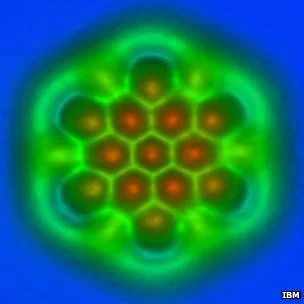IBM scientists recently managed to differentiate the chemical bonds in individual molecules – for the first time – using a technique known as noncontact atomic force microscopy (AFM).
According to IBM scientist Leo Gross, the results will go a long way in helping researchers explore the possibility of using molecules and atoms at the smallest scale.

This is especially important for graphene devices, which are currently being explored by both industry and academia for applications, including high-bandwidth wireless communication and electronic displays.
“We found two different contrast mechanisms to distinguish bonds. The first one is based on small differences in the force measured above the bonds. We expected this kind of contrast but it was a challenge to resolve,” said Gross.
”The second contrast mechanism really came as a surprise: Bonds appeared with different lengths in AFM measurements. With the help of ab initio calculations we found that the tilting of the carbon monoxide molecule at the tip apex is the cause of this contrast.”
To achieve the above-mentioned results, scientists imaged the bond order and length of individual carbon-carbon bonds in C60, also known as a buckyball for its football shape and two planar polycyclic aromatic hydrocarbons (PAHs), which resemble small flakes of graphene.
”The individual bonds between carbon atoms in such molecules differ subtly in their length and strength. All the important chemical, electronic, and optical properties of such molecules are related to the differences of bonds in the polyaromatic systems,” he explained.
“Now, for the first time, these differences were detected for both individual molecules and bonds. This can increase basic understanding at the level of individual molecules, important for research on novel electronic devices, organic solar cells, and organic light-emitting diodes (OLEDs).”
In particular, says Gross, the relaxation of bonds around defects in graphene as well as the changing of bonds in chemical reactions and in excited states could potentially be studied.






